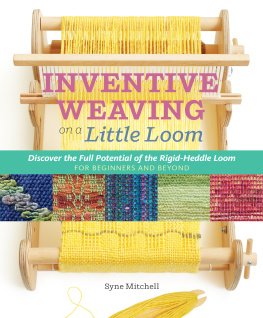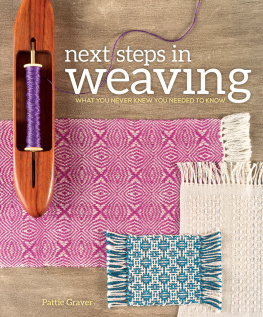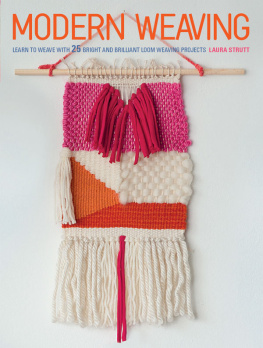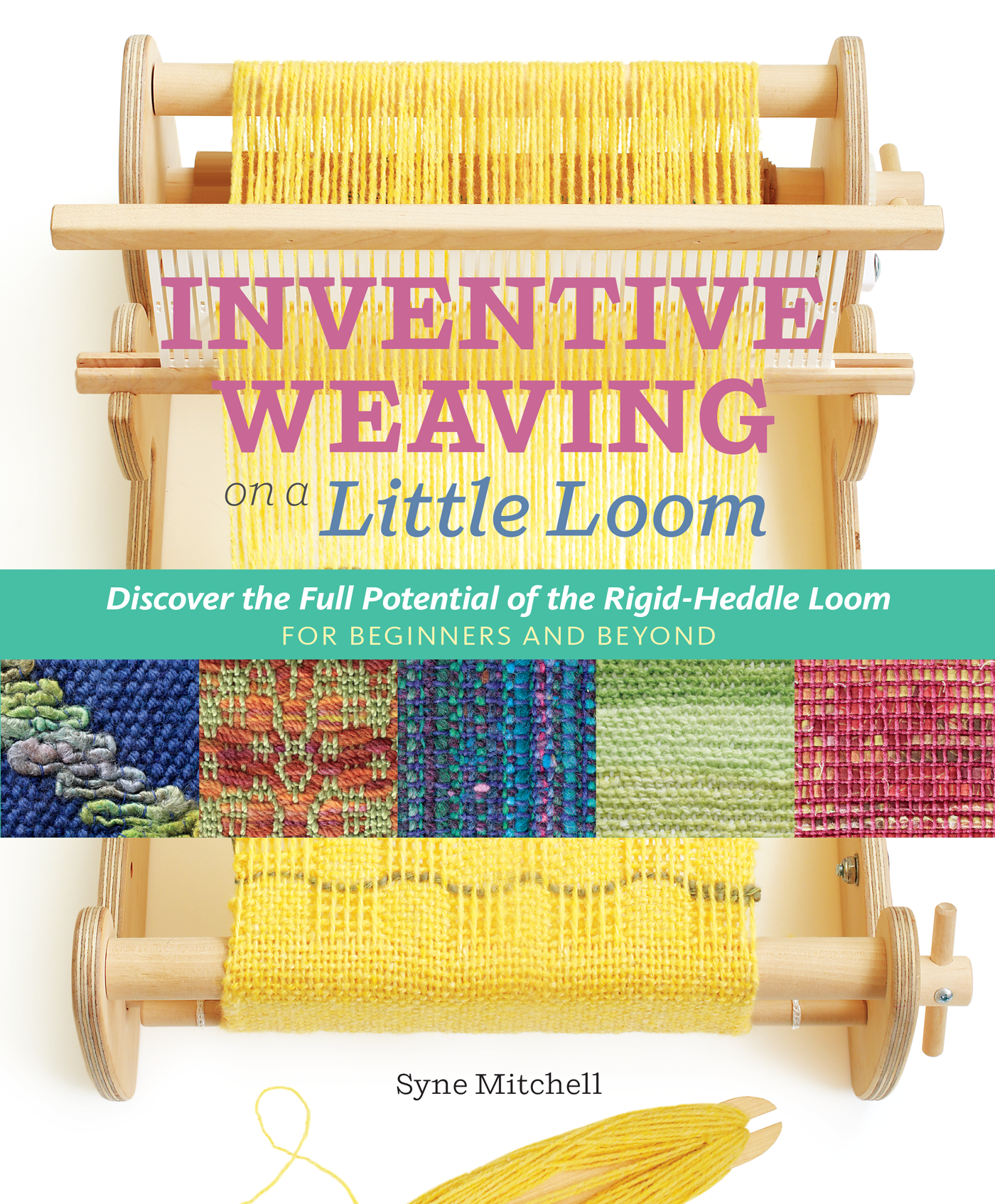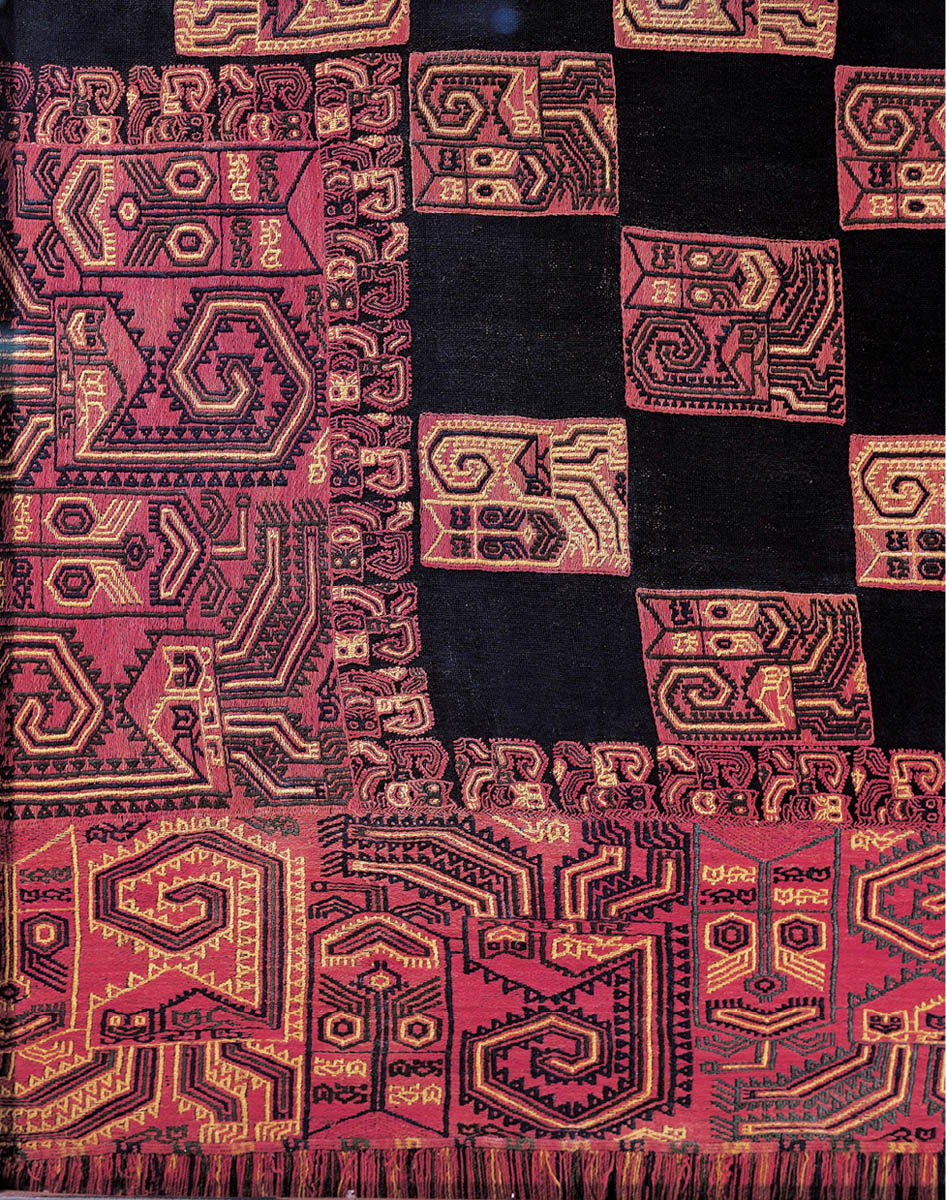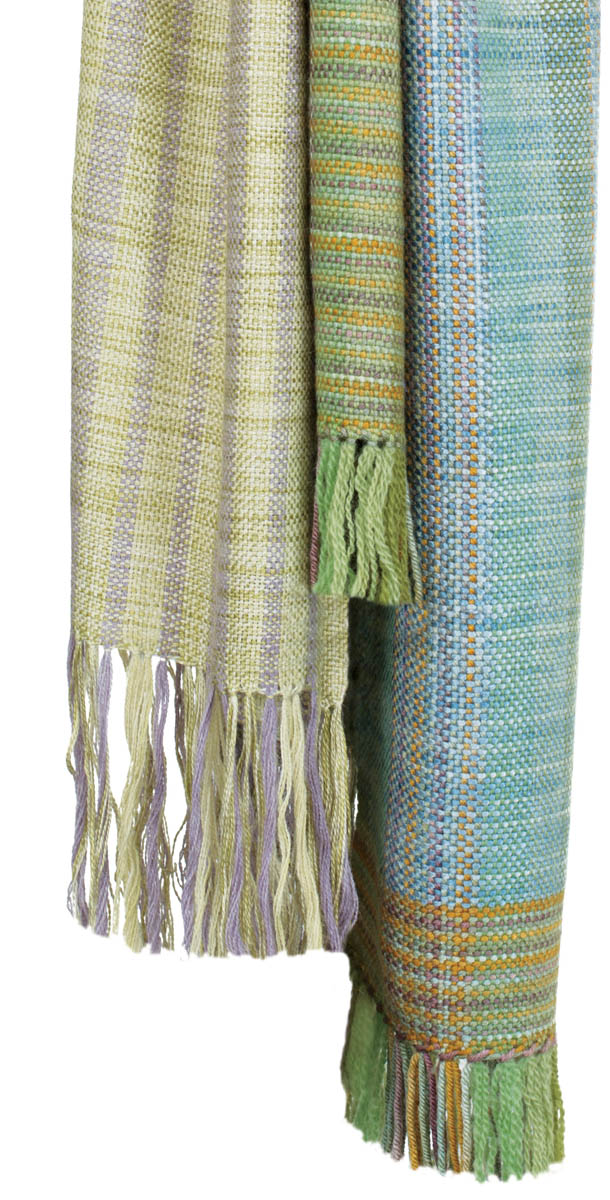For everyone whose heart beats a little faster when they play with yarn.
Weaving is one of the oldest fiber technologies, with a history that stretches back to the dawn of civilization. Woven cloth is fragile and doesnt last as long as stone arrowheads, so samples of ancient weavings are rare, but tools and images of weavers crop up in archeological finds, and on rare occasions, a precious fragment of fabric surfaces. In 2009, a team led by two Harvard professors working in the Republic of Georgia uncovered the oldest remnant of woven cloth found thus far: a 34,000-year-old piece of linen.
Whether spinning predates weaving is a mystery. Did ancient peoples twist plant leaves into cordage first, or did they begin by weaving baskets out of flexible branches? My guess is that spinning and weaving grew up together: one village learned to weave baskets, another to spin, and groups exchanged skills with each other through trade and intermarriage. In any event, you are about to embark on a textile adventure that has kept humanity warm and protected for endless generations, one that provided baskets for carrying food and clothing to protect against the elements, and that created houses to live in and burial shrouds for the grave.
Fabric for a funeral cloak from pre-Inca culture in the sixth century B . C . E .
The Magic and Mystery of Weaving
There are two components in weaving: warp threads and weft threads. The warp threads run lengthwise through the cloth, and the weft threads run side to side. During weaving, the warp threads are held on the loom under tension, and the weft is inserted (thrown) by the weaver.
Cloth is created where warp and weft interlace. The mother of all weave structures is plain weave, also known as over one, under one. This is the weave structure that many of us learned when we wove strips of colored paper together in kindergarten. But there are countless other ways to combine warp and weft. For example, by floating the weft over two threads in the warp you can create half basketweave. Or you can shift the threads so the floats move over by one each time you throw the shuttle and create a twill.
Now that youve got an idea of how cloth is made, you are only beginning to touch what I call the magic and mystery of weaving. Be careful! Many folks who try weaving get bitten by the weaving bug and soon find themselves weaving off warp after warp. I know because Im one of them. What started as a class taken on a whim soon became an obsession that has guided and enriched my life in unexpected ways.
Why, in this age of big-box stores and cheap clothing do so many people weave? Its a question I ask myself regularly, and that Ive asked other people whove made weaving their lifes work or avocation. Answers vary, but it also comes down to the simple fact: weaving is fascinating.
My own reason for weaving is this: it makes my whole brain happy. There is analytical puzzle solving to delight my left hemisphere, and colors and textures galore to tickle my right. Its an art that can be as simple or as complex as you like. Three-year-olds can weave, but its also an art form thats so rich and full of possibilities that you couldnt possibly learn it all in one lifetime.
Weaving is full of surprises, the way colors interact on the loom, for example. The tiny dots of warp and weft combine to create new, unanticipated colors. Even weavers with decades of experience can make new discoveries. The cloth changes when you take it off the looms tension, and again after its washed (known as wet-finishing). Something flat and lifeless on the loom might suddenly pucker into a deep waffle weave. Its this challenge and sense of discovery that keep me coming back to the loom. Theres a profound sense of whatll happen if... ?
On the other side of the spectrum, weaving can be therapeutic. Studies with stroke patients at the University of Maryland in Baltimore have shown that rhythmic, repetitive actions that alternate using your left and right hands improve how the two sides of your brain work together. I wove a simple plain-weave fabric while recovering from jaw surgery, and found it a soothing release from pain and worry. During World Wars I and II, army hospitals used weaving as occupational therapy to help injured soldiers recover. Many of those men went on to weave avocationally, spurring the weaving boom of the 1950s. From cloth woven in the dawn of civilization, to the woven T-164 Teflon fabric that protected Apollo astronauts on the moon, to the unimaginable future, weaving is an integral part of human civilization.


a) plain weave, b) Danish medallions, c) weft-dominant plain weave, d) point twill,e) log cabin, f) half basketweave, g) pile loop, h) shadow weave
Old and New Looms: from Simple to Complex
The first question students ask me in beginning classes is Why is it called a rigid-heddle loom? To answer it, you first need to understand what a heddle does. On any loom, heddles select the threads the loom raises or lowers to make an opening, or shed, for the shuttle to pass through. On a backstrap loom, heddles are usually created by string wrapped around a stick. In a shaft loom, heddles are usually either metal, string, or wire and are placed on shafts to make it easier to pick up complex patterns. On a rigid-heddle loom, the heddles have holes drilled in a rigid material (traditionally wood or bone, now more commonly plastic) that also acts as a warp spacer and beater. This, then, is the rigid heddle of a rigid-heddle loom. That the heddles (the patterning devices) are combined with the beater and reed (the spacing device) is the defining characteristic of a rigid-heddle loom.

Since weaving is so ancient and diverse, humankind has developed many types of looms to interlace threads: backstrap looms, rigid-heddle looms, multishaft looms, frame looms, tapestry looms, inkle looms, and more. Each one fills a particular need and is specialized to certain types of weaving. In this section, well take a closer look at the features of the rigid-heddle loom.
Rigid-heddle looms have been found in archeological digs dating back to Roman times. The Museum of Antiquities of Newcastle University and Society of Antiquaries of Newcastle upon Tyne has in its collection a Roman rigid heddle that was made of bone slats bound together at the top and bottom with sheet bronze. One of the simpler looms to build (you can create one with wooden craft sticks and a bit of creativity), they have been, and continue to be, used all over the world.

